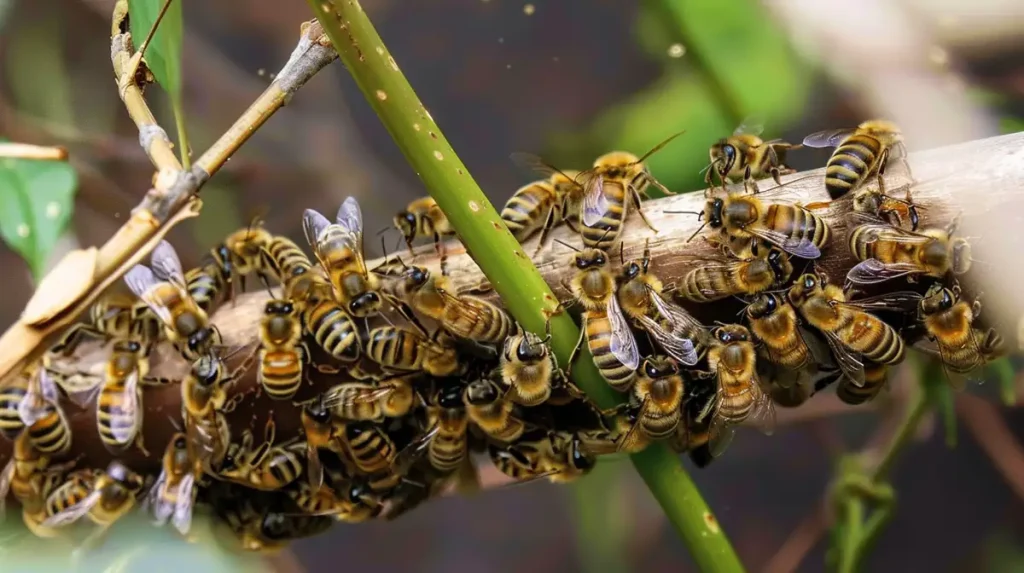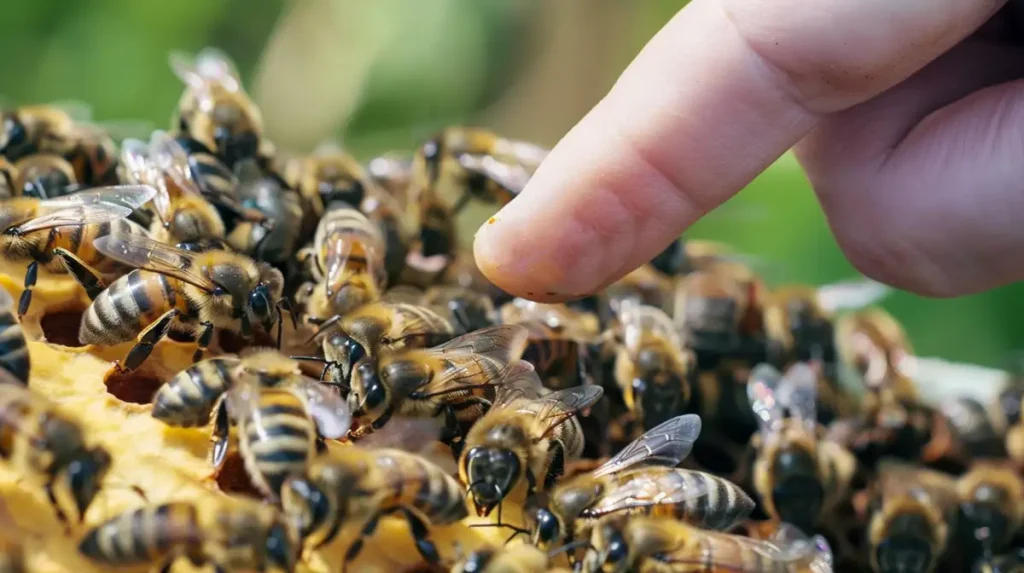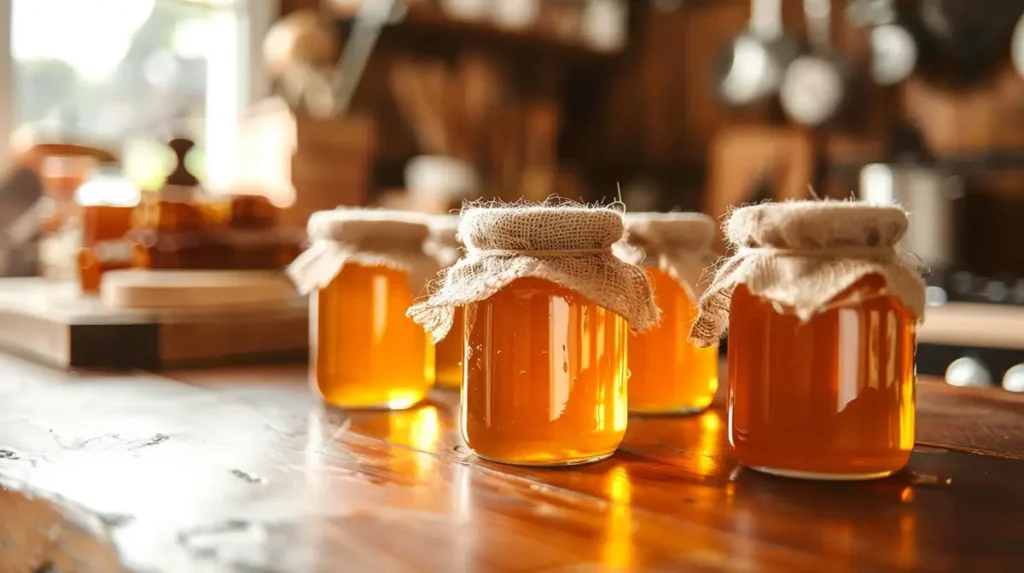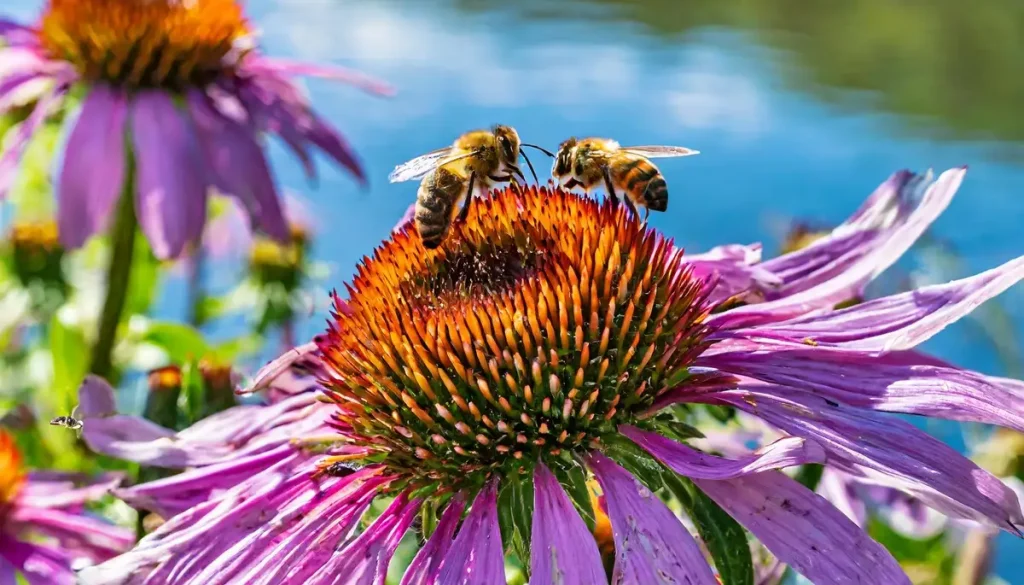Table of Contents
To get bees for beekeeping, you can purchase them from reputable beekeeping suppliers or local beekeepers. These suppliers often offer various options like packaged bees, which are small boxes of bees with a queen, or nucleus colonies (nucs), which are mini-hives with frames of brood, honey, a queen, and workers. Additionally, attending local beekeeping clubs or associations can provide valuable connections for sourcing bees and offer insights into local bee populations suitable for your area.
In the below paragraphs, we will take a more detailed look at this topic.
If you are considering taking up beekeeping, as a hobby or a professional endeavor, there are a few things to consider beforehand as well as a number of things that will need to be obtained or purchased – namely the bees. But it is not as though you can go to your nearest supermarket or pet store to bulk-buy bees. So where do you get them from?
You can obtain bees from a bee supplier (preferably local) as a package or a nucleus hive – which is the recommended method – or you could try and obtain some bees from the wild (which does have a few caveats).
Before getting into the details though (which I cover concisely in the below paragraphs), allow me to quickly introduce what beekeeping for the uninitiated who may have stumbled across my page.
Beekeeping is a form of husbandry, if you will, that pertains to honeybees. Known formally as apiculture, beekeeping involves the maintenance of bee colonies for the purposes of harvesting the various products a hive produces. Those products include (but are not limited to) honey and beeswax.
In recent years, honeybee colonies throughout Latin America, North America, Western Europe, and other parts of the world have experienced inexplicable collapse. No one really knows exactly why bees are no longer thriving to the degree they were just a decade or so ago, but it is happening, nonetheless. The good news is that amateur beekeepers are taking it upon themselves to be part of the solution. Beekeeping, therefore, is exploding as a hobby all over the world.
Other guides on my website explain the finer points of beekeeping. This guide will focus on where to get bees for a new beekeeping operation. Note that what you read here is general by nature. Obtaining bees differs depending on where you happen to live in the world.
What You Need to Know
Before starting to look for bee suppliers though, it would be wise to think about what type of bees you want. If you hadn’t realized beforehand, there are different types of honeybees, so it is important to think about what you want from your beehive before making any purchase.
You may also not be aware of this also, but some bees are seen as gentler and more suitable to beginner beekeepers than other types. Moreover, as honeybees are prone to swarming, it might be best for those starting out with beekeeping to choose a variety of bee that is less likely to swarm.
Experienced beekeepers tend to advise beginners to consider the Italian honeybee due to its gentle nature and propensity to not swarm as much as other varieties do. Italian honeybees also produce quite a lot of honey, which is always going to be a bonus. It would probably be best to avoid the Carniolan bee unless you have experience as, in stark contrast to the Italian bee, this type is much more likely to swarm and will not produce as much honey.
Can I Get Bees from the Wild?
Although I very strongly recommend that beekeepers – especially new beekeepers – buy their first bees, you could get your first group of bees from the wild. It is not hard to do. The first thing to do is take a walk out in a field or forest during the late spring. Why late spring? This is the time of year honeybees are known to swarm. Why do they swarm? Because they are looking for a location to build a new hive.
- Carter, Anthony (Author)
- English (Publication Language)
- 194 Pages - 02/28/2024 (Publication Date) - Independently published (Publisher)

From the end of winter through until mid-spring, the queen of a honeybee hive is laying as many eggs as she can. Workers are gathering food and expanding the hive when possible. But there generally comes a time when the hive can no longer contain all the activity. The queen leaves in search of a new hive location, bringing drones and workers her. One of her offspring takes the ‘throne’ in the old hive.
Note that honeybees are generally not aggressive to human beings – even when they are swarming. A honeybee swarm is more visually frightening than it is dangerous. Nonetheless, wait until the swarm settles down before attempting to capture some of the bees.
Collecting from a Tree Limb
Collecting bees from a tree limb is a pretty straightforward process. Get hold of some sort of container with a lid, obviously making sure that it is going to be big enough for the job. Then cut the limb, place it inside or above the container, and gently shake it. When you have collected most of the bees, quickly remove the limb and put the lid on. Some of the bees will escape before you close the container, but you should come away with enough to start your first colony.
Collecting from a Flat Surface
You can collect bees from a flat surface by gently guiding them into your container with something like a piece of cardboard. Just place the container to the one side and slowly begin to push. All you are really trying to do is coax the bees to move toward your container. Another way of encouraging them to move toward the container is to use the smoke from a smoker.
Once you have bees in the container, transfer them to your hive by opening the container and gently shaking over the top of the hive. The bees will find their new home naturally.
Are There Regulations to Worry About?
Before I move on to the idea of buying bees, it is important to talk about regulations. First are regulations pertaining to property ownership. Regardless of where you live, know that you need to have permission to be on any land that you do not own. In some parts of the world, going on someone else’s land to obtain bees is more serious than mere trespassing.
There may also be regulations concerning the actual collection of bees. In some jurisdictions, bees in the wild are considered the property of the person who owns the land on which they reside. In other jurisdictions, bee populations are so fragile that regulations prevent amateur beekeepers from obtaining the insects by themselves.
Can I Just Buy Bees Instead of Capturing Them?
Yes, and I wholeheartedly recommend all beginners go this route. Bees are sold by suppliers who create and nurture colonies precisely for this purpose. It is important to do your research before you buy and that you make sure you are buying from a trusted and respected seller. A simple online search will point you in the right direction for trusted sellers in your local area.
So no matter where you are located in the world, you should be able to find information regarding local bee suppliers online. Nevertheless, buying from the first bee supplier you come across is probably not the greatest idea. It is much better to find out as much as you can about the supplier in question and ensure that he or she is meeting all required standards. The last thing you would want, for example, is to be sold bees that are diseased.
Try and look for a local supplier to help reduce transport times for both yourself and the bees. As well as this, locally bred bees will be much easier to manage and more likely to thrive.
So, although obtaining bees from the wild might be free, it is not necessarily the best thing to do. First of all, there is no way to know if the swarm gathering on the other side of field or wood’s edge constitute a colony of healthy bees. The bees could be sick; the queen could be injured or dead. You just don’t know. The other thing to consider is that you may not get the queen during your collection effort. Your hive will not be much good without a queen.
As I have stressed a couple of times, the much better way to obtain your bees is to simply buy them. This is the way the vast majority of amateur beekeepers get started. It is best to try to buy them from a location as close to where you live is possible. Doing this means that there is better chance of receiving bees that are already suited to local conditions. There are generally two ways to purchase bees: in a package or a nucleus.
A Package
Buying in a package is the most common way to do it in Europe. A package consists of a queen along with a supply of worker bees. The packaging will also include a feeder filled with enough food to keep the bees alive during transport. As long as the queen is kept secure, the workers will have no incentive to try to leave the colony. Purchasing a package means that you have the chance to see the entire process of a hive getting up and running; as a new beekeeper, you might enjoy seeing this process for yourself.
Here is a great video I found on YouTube about installing packages.
Nucleus Hives
The other way to purchase bees is to buy a nucleus hive. A nucleus hive is a small colony created by removing some bees from a much larger colony and using them to populate a new hive. These smaller colonies are quite popular in the United States, Canada, and South American countries.
A nucleus hive is an established hive with a queen bee who is actively laying eggs and with worker bees that are already producing honey. This will be easier for you to handle as a beginner.
The main advantage of the nucleus hive is that all the bees are from the same source. The bees contained in a package may come from various sources, so they may not be familiar with one another. This could cause problems down the road. Nucleus hives are also sold locally in most cases. Thus, amateur beekeepers can typically pick up their hives rather than having them delivered on the back of a truck.
There are some disadvantages to nucleus hives though. Most concerning is the possibility of getting an older queen who doesn’t produce the same high-quality eggs. This could result in weaker bees and, ultimately, a weaker colony. When going the nucleus hive route, it is best to search out a supplier with a reputation for nursing nucleus hives for several months before selling them.
Here is a video about introducing a nucleus colony.
What to Do When the Bees Arrive
If you purchase a nucleus hive, nothing particularly needs to be done when it arrives. You put it in place, do a cursory inspection, and you are done – walk away and let the bees do their thing. If you purchase a package though, you will have to introduce the queen to the hive. You can do this in one of two ways: the indirect method or the direct method.
The Indirect Method of Introduction
The indirect method is a simple matter of placing your new bees in their hive while still contained in the packaging. The workers will gradually eat through the food tray until they are introduced to the queen. This gradual method of introduction is considered the safest way to go.
The Direct Method of Introduction
The direct method involves introducing the worker bees to the hive first, then introducing the queen by placing her directly in the hive after the workers have settled down. The downside to this method is found in the fact that the workers are being introduced to a queen they do not know. They may accept that queen and immediately get to work repopulating the new hive. On the other hand, they may reject the queen and kill her.
What Happens if the Queen Does Not Survive?
If the queen does not survive, neither will your colony. Bee colonies are delicate communities of insects that require a specific structure to thrive. The queen is the center of that structure. Fortunately, a colony will not fail immediately upon the death of the queen and you do have a little bit of time to get a new queen.

Requeening
The process of introducing a new queen after an old one has died is known as requeening. This is not an especially complicated process if you are dealing with a brand-new colony that rejected its first queen following a direct introduction. If you are requeening a colony that has had the same queen for some time though, it is more difficult. Bees can get very agitated during the requeening process.
Is There Anything Else I Need to Know?
Before embarking on a new hobby of beekeeping, understand that this is not anything like keeping a dog or cat. Right off the top, honeybee colonies are extremely sensitive. Colony collapse doesn’t take much to initiate. That is because bees are very sensitive to the local environment – which brings me to the second point: beekeeping is considered a local enterprise.
Remember the comment earlier in this guide about buying bees from a location as close to where you live as possible? Everything from local weather to diseases can affect honeybees. Bringing in bees from a location that is too far away exposes the colony to conditions they may not be able to tolerate.
The next thing you need to know is that beekeeping is a climate-sensitive hobby. That is because bee behavior is almost entirely directed by climate and weather conditions. If you live in a warm weather climate for example, be prepared to attend to your bees nearly year-round. In a cooler climate prone to cold winter temperatures, your bees will hibernate over the winter.
If you are not sure if beekeeping is for you, you might be better off trying to obtain your first colony from the wild rather than purchasing it. At least then you will not be investing in something you may end up abandoning soon after you get started. Please do bear in mind the warnings that I outlined in that section of this post though. Once you are sure beekeeping is something you want to pursue more fully, you can then consider purchasing a package or nucleus hive.
What Other Equipment Will You Need?
There is no point in buying bees unless you are prepared for them first. The most important purchase will be the hive in which you will keep your bees. Furthermore, this should be fully prepared before you purchase any bees; it will, after all, be their home and you will need to introduce them to it as soon as you get them.
It is important that you have other equipment before starting beekeeping, namely those items that will allow you to handle the bees appropriately. This means protective clothing as well as a smoker to keep the bees calm while you are working with them. As bees can sting, it is important to be fully protected, which means wearing a full suit that includes a veil and gloves.
What to Do Once You Have Your Bees
Buying bees and the necessary equipment is the important first step on your journey towards becoming an experienced beekeeper. But what do you do once the bees are onsite and fairly settled – how do you get started?
You will need to know how to use a smoker correctly; this is an essential piece of equipment that will keep the bees calm while you work in the hive. I recommend this great bargain priced smoker available at Amazon (the link opens in a new tab). As mentioned above, when you are working with your bee colony, you should always wear protective clothing.
When operating the smoker, it is best to start a small fire in the can using a fuel such as pine with paper, cotton, or lint from your tumble dryer to get it started. Once the fire has started, put the lid on the can and always wear gloves when handling as it is likely to get very hot.
Bees will produce honey, which they will use to feed themselves while they work. However, in the beginning, they may not have enough stores to use; if this is the case, then it is up to you to supplement their food. You can do this by making a sugar solution, mixing one-part water with one-part sugar and placing it in the hive. If you prefer, you can purchase frames to place in the hive and feed the colony until they have created their own stores.
Once the colony has started to thrive and is creating its own food, you can stop feeding them the sugar syrup. Your hive should quickly become self-sufficient; once it does, you will not have to feed them yourself unless you are treating an illness within the hive.
Growing Your Colony
If your colony of bees is healthy and thriving, it will begin to grow. As it does, you will need to make sure that you add more space. If the bees become aware of running out of space, they may feel the need to swarm, meaning that you could lose at least half of your colony. Providing room for them to grow reduces the swarming tendency.
It is a good idea to offer a bigger hive as the colony numbers swell. With more room to move, the bees will be easier to handle. You can purchase extra hives to house your growing number of bees or build a bigger hive and move them to this.
When Can You Collect Honey?
If this is your first time at beekeeping, you may be wondering when you will be able to collect honey. For most beginner beekeepers, there will be a small harvest of honey at the end of the summer. But do not be disheartened if the colony has only produced a small amount of honey at the end of the first summer. The colony will need time to grow, and you will need quite a big population for a surplus of honey to be produced.

During the summer, you should have a look under the cover every few weeks to get an indication of the progress the bees are making. Once you see around eighty per cent capped, sealed honey in a shallow frame, you can remove it and harvest the honey.
Some people prefer to wait until all of their frames have been filled with capped honey; others simply wait until the last nectar flow of the summer has been completed.
Capped honey means honey that has been capped with wax. Not all honey in your frames will be capped but if it is cured, it can still be removed. To test if the honey is cured, turn the frame so that the cells are facing the ground. Tapping the frame will give you an indication of whether the honey is cured. If it leaks from the cells, then it is not cured and is not ready to be extracted.
The best practice for beekeeping is to wait until your bees have gathered as much honey as possible before you extract it. While waiting for the right time is important, be sure not to leave it too long as the bees will begin eating the honey if you leave it longer than you need to. It is also crucial to remove the honey before the weather cools as this can cause the honey to harden, making it difficult to extract.
Beekeeping Disclaimer:
Beekeeping, like any agricultural activity, involves inherent risks. It is important to understand these risks and take appropriate measures to mitigate them.
Potential risks associated with beekeeping include:
- Bee stings: Honey bees are generally not aggressive but can become defensive if they feel threatened or their hive is disturbed. Bee stings can cause allergic reactions or even anaphylaxis in some individuals, which can be life-threatening. It is important to wear protective clothing and follow best practices when handling bees to minimize the risk of stings.
- Diseases and pests: Bees can be vulnerable to various diseases and pests, including mites, viruses, and bacterial infections. These can have significant impacts on bee colonies, leading to reduced honey production or even colony collapse. It is important to monitor hives regularly and take appropriate measures to prevent and treat diseases and pests.
- Weather conditions: Extreme weather conditions, such as drought or cold temperatures, can affect the health and productivity of bee colonies. It is important to ensure that hives are appropriately sheltered and provided with adequate food and water.
- Environmental hazards: Bees can be affected by environmental hazards such as pesticide exposure, pollution, and habitat loss. It is important to be aware of these hazards and take appropriate measures to protect bee colonies and promote healthy environments for bees.
- Legal requirements: Beekeeping may be subject to local, state, or national regulations, such as registration or inspection requirements. It is important to be aware of these requirements and comply with them.
While beekeeping can be a rewarding and enjoyable activity, it is important to be aware of the potential risks and take appropriate measures to mitigate them. By following best practices and staying informed about the latest developments in beekeeping, beekeepers can help ensure the health and productivity of their hives and contribute to the well-being of bee populations worldwide.
Last update on 2024-04-17 / Affiliate links / Images from Amazon Product Advertising API



